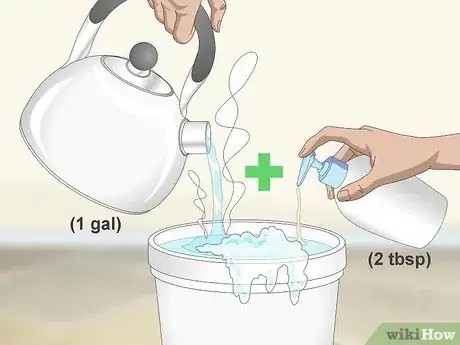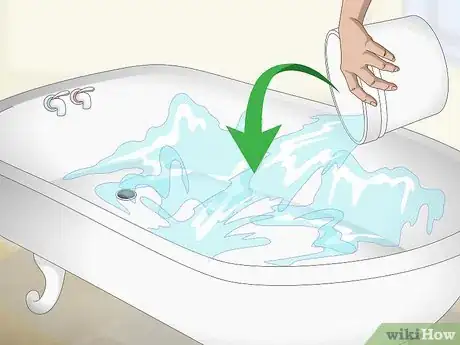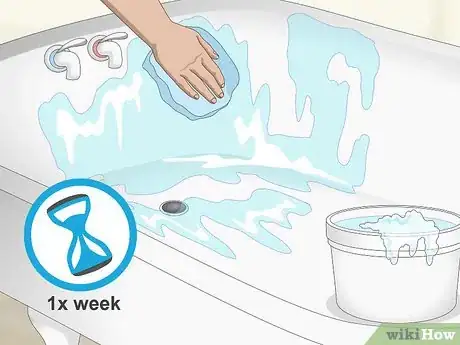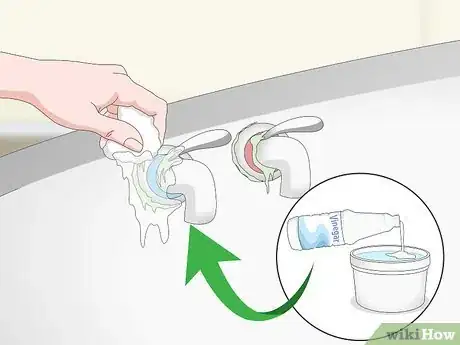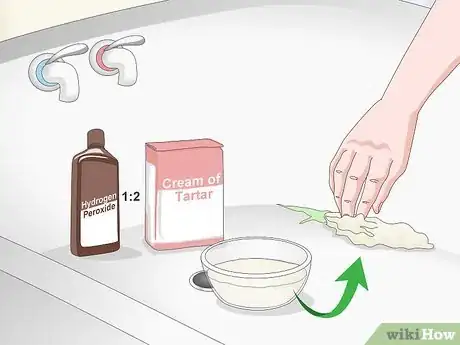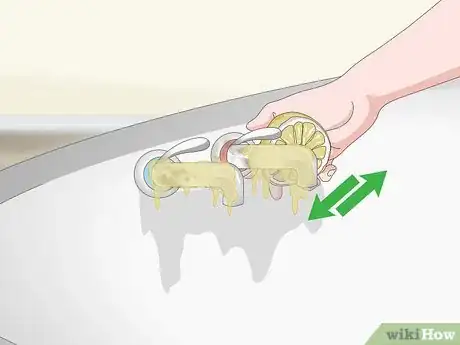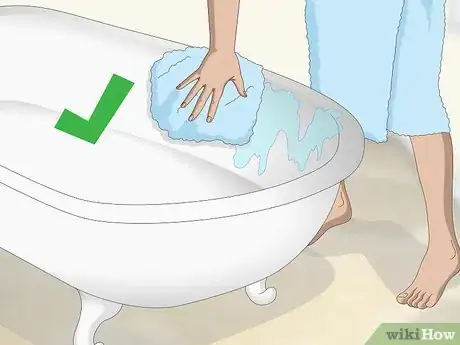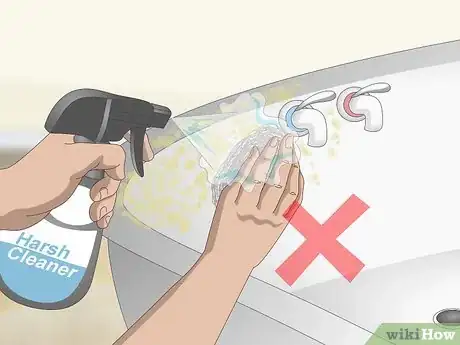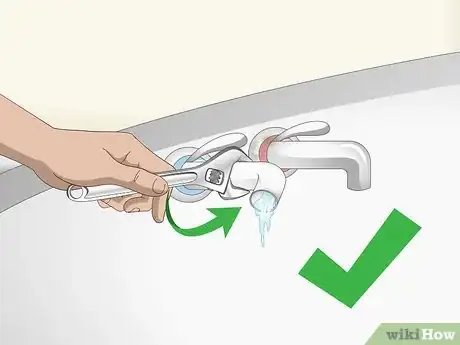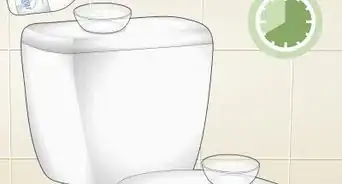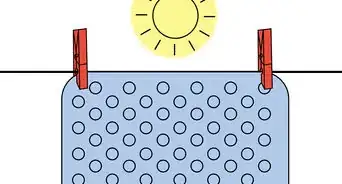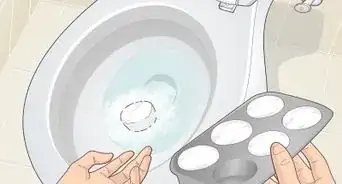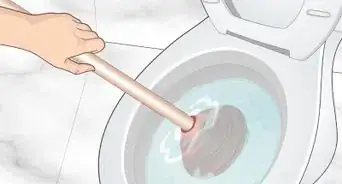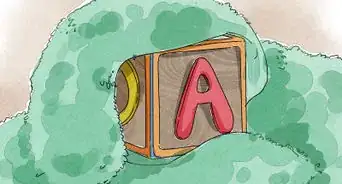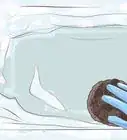This article was co-authored by Michelle Driscoll, MPH and by wikiHow staff writer, Jessica Gibson. Michelle Driscoll is the Owner of Mulberry Maids, which is based in Fort Collins, Colorado. With five years of experience, her business specializes in cleaning homes and small offices. She holds a Masters in Public Health from the Colorado School of Public Health. Additionally, Mulberry Maids has an A+ rating from the Better Business Bureau.
This article has been viewed 75,394 times.
If you have an enamel bathtub, regular cleaning and maintenance will keep it looking beautiful. Wash your enamel bathtub every week using soapy water and a soft cloth. Remember to dry the tub after every use and fix leaks that could cause staining. To remove stains, avoid abrasive cleansers or tools. Instead, apply cleansing solutions and let them soak on the stain. Wipe and rinse away the solution to reveal your clean enamel tub.
Things You Should Know
- For basic maintenance cleaning, scrub your tub using warm water and dish soap.
- Use equal parts vinegar and water to remove limescale.
- For tougher stains, spray the tub with diluted chlorine bleach or soak the area with hydrogen peroxide and cream of tartar.
- Avoid pure bleach, undiluted vinegar, scouring powders, or steel wool on your tub.
Steps
Doing a Basic Cleaning
-
1Mix hot water and liquid dishwashing soap. Get out a small bucket and pour 2 tablespoons (30 ml) of gentle dishwashing soap into it. Use a dishwashing soap that will cut through grease and grime. Pour 1 gallon (3.8 liters) of hot water into the bucket. Stir the mixture until it's soapy and combined.[1]
-
2Rub the cleaning solution over the entire tub. Dip a sponge or soft cloth into the soapy cleaning solution. Wipe the solution along the bottom and sides of the enamel tub. Gently scrub the tub to loosen any grime or soap deposits.[2]
- Avoid using sponges that have an abrasive side, which could damage the enamel.
Advertisement -
3Rinse the tub with clean water. Fill a clean bucket with clean water and pour it over the soapy tub to rinse it. You may need to fill the bucket a few times to remove all of the soapy residue. Wipe the tub dry.[3]
- You could also turn on the shower and direct the nozzle to rinse away the soap. If your shower head is a handheld model, this is the easiest way to rinse the bathtub.
- Since you'll be drying the tub immediately, you can use any temperature of water to rinse it.
-
4Clean the enamel tub every week. Remember to clean your tub at least once a week or more, if you use it more frequently. If you keep the enamel tub clean on a regular basis, it's less likely to develop stains or limescale buildup.[4]
Removing Tough Stains
-
1Dissolve limescale buildup with equal parts vinegar and water. Avoid using commercial products that have anti-limescale ingredients since they could leave the enamel looking dull. Instead, remove the chalky buildup by mixing together equal parts of white vinegar and water. Dip a soft cloth into the diluted vinegar and rub it on the limescale until it dissolves. Rinse the area and dry it immediately.[5]
- Avoid rubbing the diluted vinegar over other parts of the tub that don't have limescale since this could damage it.
-
2Apply diluted chlorine bleach to stains. For most stains, mix together 1/2 cup (120 ml) of chlorine bleach and 1 gallon (3.8 liters) of water. Dip a cloth in the solution and rub it over the stain. You can also spray the solution directly on the stain. Let the bleach solution sit for 1 to 2 minutes and then rinse it off. Dry the tub once the stain is removed.[6]
- Do not apply bleach right after you apply vinegar, as they will form a noxious gas if they mix. When you need to use both vinegar and bleach, make sure you thoroughly rinse away the vinegar before you apply the bleach, and vice versa.
-
3Soak stains with a paste of hydrogen peroxide and cream of tartar. If you have tougher stains that don't disappear after using the bleach solution, make a gentle cleaning paste. Mix together 1 part hydrogen peroxide with 2 parts cream of tartar. Spread this paste over the stains and let it sit for 30 minutes to 1 hour. Use a soft cloth to wipe away the paste and then rinse the area. Dry it if the stains are gone.[7]
- As an alternative, you can use baking soda and vinegar to remove tough stains. Sprinkle the baking soda over the stain, then spray vinegar onto the baking soda. The vinegar and baking soda will react to each other, creating a foam. Let the foam sit for 5-10 minutes, then scrub it away with a clean cloth.
- If the stains aren't gone, you can repeat the treatment until they disappear.
-
4Rub a sliced lemon over rust stains. Slice a fresh lemon in half and rub it directly onto rust stains. Keep rubbing the lemon until you see the stains lift and disappear. Rinse the tub and dry it immediately.[8]
- Some people may recommend dipping the lemon in salt before scrubbing it over the stain, but the salt could scratch or damage the enamel.
Caring for an Enamel Bathtub
-
1Dry the bathtub after every use. Prevent staining and limescale, especially if you have hard water, by wiping the bathtub dry every time you've finished using it. Take a soft cloth and wipe it completely dry.[9]
- Wiping the tub dry will prevent the soapy water residue from evaporating, which creates limescale buildup.
-
2Avoid using harsh cleansers or tools on the enamel. Abrasive materials such as harsh cleansers, pure vinegar, bleach, scouring powders, and steel wool can damage the enamel on the tub. You should also avoid any cleansers that are highly acidic.[10]
-
3Fix leaky faucets to prevent enamel damage. If the faucet leaks, the constant water dripping can stain the enamel and cause chalky limescale buildup. To prevent this damage to the enamel, re-washer the faucets or pay a plumber to stop the leak.[11]
- You may need to replace worn seals, gaskets, or washers in the faucet.
-
4Clean out your drain weekly to avoid a clog. Use your fingers or a wire to remove any hair or debris that's caught in your drain. This is especially important if you have long hair, which can quickly clog a drain.
- If your drain gets clogged or slows down, you'll end up with soap scum rings around your tub.
- To help keep your drain clear, you can put a mesh drain strainer over the drain to collect hair and debris so it doesn't go down the drain. Simply wipe the strainer clean every few days. You can find a strainer at a department store, home improvement store, or online.
Things You'll Need
Following a Basic Cleaning Routine
- Liquid dishwashing soap
- Measuring cups
- Buckets
- Soft cloths
Removing Stains from the Enamel
- White vinegar
- Chlorine bleach
- Soft cloths
- Bowls
- Bucket
- Hydrogen peroxide
- Cream of tartar
- Lemon
Caring for the Enamel Bathtub
- White vinegar
- Soft cloths
- Bucket
- Wire (optional)
- Drain strainer (optional)
References
- ↑ https://www.americanstandard-us.com/parts-support/faqs/americast-tubs
- ↑ https://www.apartmenttherapy.com/how-to-clean-an-old-porcelain-enamel-bathtub-or-sink-137148
- ↑ https://www.apartmenttherapy.com/how-to-clean-an-old-porcelain-enamel-bathtub-or-sink-137148
- ↑ https://www.apartmenttherapy.com/how-to-clean-an-old-porcelain-enamel-bathtub-or-sink-137148
- ↑ https://www.goodhousekeeping.co.uk/institute/household-advice/cleaning-tips/bathroom-cleaning-tips-sparkling-bathroom
- ↑ https://www.consumerreports.org/home-garden/cleaning-tips-to-make-your-bathroom-sparkle/
- ↑ https://www.bobvila.com/articles/cleaning-bathtub/#.WkkN_N-nHIU
- ↑ https://www.bobvila.com/articles/cleaning-bathtub/#.WkkN_N-nHIU
- ↑ http://www.vea.org.uk/enamel-care/
About This Article
To clean stains from an enamel bathtub, spray or rub on a solution of ½ cup of chlorine bleach diluted in a gallon of water. Let the bleach sit for 1 to 2 minutes before rinsing, then dry the tub once the stain is removed. For rust stains, try rubbing a freshly cut lemon half directly on the stain until it lifts and disappears. Alternatively, for limescale buildup, rub the area with a soft cloth dipped in a solution of equal parts water and white vinegar. Make sure to use the solution only on the areas with limescale to avoid damaging the rest of the tub. For more tips, like how to dissolve tough stains with hydrogen peroxide and cream of tartar, read on.
